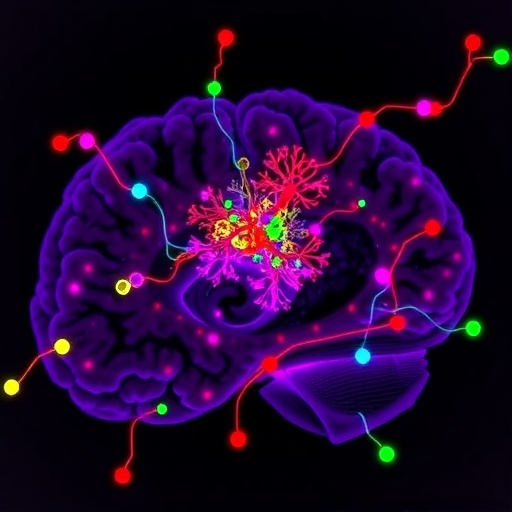In a groundbreaking study published in the Journal of Translational Medicine, researchers led by L. Wang, W. Li, and X. Wu have uncovered the pivotal role of Fibroblast Growth Factor 21 (FGF21) in maintaining redox homeostasis and enhancing neuronal survival following traumatic brain injury (TBI). This study, which has profound implications for the treatment of TBI, illuminates the intricate biochemical pathways that can be manipulated to protect neuronal health in the aftermath of injury.
FGF21 is a versatile peptide hormone that is primarily secreted by the liver, playing an essential role in metabolic regulation. Its neuroprotective qualities, however, have only recently begun to garner scientific attention. In their research, Wang and colleagues investigated how FGF21 interacts with SLC25A39, a mitochondrial protein responsible for transporting glutathione (GSH), a vital antioxidant. This specific interaction was highlighted as a significant mechanism through which FGF21 exerts its protective effects on neurons after TBI.
Traumatic brain injury is known to cause complex biochemical changes that can lead to oxidative stress, a condition characterized by the overproduction of reactive oxygen species (ROS). This oxidative stress is a major contributor to neuronal cell death and has been implicated in various neurodegenerative diseases. The study highlights how FGF21 can mitigate these effects by regulating the expression and function of SLC25A39, thereby facilitating GSH transport into mitochondria where it is most needed to combat oxidative stress.
The research team employed a range of experimental models to elucidate these mechanisms. Utilizing both in vitro and in vivo approaches, they demonstrated that FGF21 not only enhances the survival of neuronal cells but also restores redox balance in the brain following TBI. By boosting GSH levels within the mitochondria, FGF21 acts as a shield against the harmful effects of oxidative stress, promoting overall neuronal health and resilience.
An essential aspect of the study is its detailed exploration of the signaling pathways involved in FGF21’s neuroprotective actions. The researchers found that the activation of certain molecular pathways associated with FGF21 signaling led to decreased levels of oxidative stress markers. This was corroborated by the observation that neuronal cells treated with FGF21 exhibited improved survival rates and reduced apoptosis, particularly in the context of oxidative damage induced by TBI.
The implications of this research are vast, particularly in the field of neuroprotection and the development of therapeutic strategies for TBI. By establishing a clear link between FGF21 signaling and mitochondrial function, this study lays the groundwork for future investigations aimed at harnessing this pathway for clinical use. The potential of FGF21 as a biomarker for assessing neuronal health post-injury is also an intriguing avenue worth exploring, potentially enabling early intervention strategies that could significantly alter patient outcomes.
Moreover, the study opens the door to exciting future research directions. Investigating the potential of FGF21 analogs or small molecules that can mimic its neuroprotective effects could yield new pharmacological strategies for treating TBI and perhaps other neurodegenerative conditions. Such treatments could be game-changers in the management of brain injuries, where prompt and effective intervention is crucial to preserving neurological function.
The findings of this research align with a growing body of literature that underscores the importance of metabolic regulation in neuroprotection. With the increasing incidence of TBIs across various demographics—sports injuries, falls, and vehicular accidents being common causes—discoveries like those made by Wang and colleagues are critical. They not only enhance our understanding of the biological underpinnings of brain injuries but also provide a pathway toward developing novel therapeutic interventions that can improve clinical outcomes.
Ultimately, the work of Wang, Li, Wu, and their team exemplifies the continued evolution of research into neurobiology and metabolism. By bridging this gap, they have poised FGF21 as a significant player in the realm of neuroprotection. As researchers delve deeper into the mechanics of how specific growth factors can influence neuronal survival, the collective hope is that such insights will lead to substantial advances in treating traumatic brain injuries and preserving critical neurological functions.
In conclusion, this study adds a crucial piece to the puzzle of understanding how neuroprotective agents like FGF21 operate at a molecular level to preserve neuronal resilience in the face of injury. As the research community continues to unravel the complexities of brain metabolism and injury response, the contributions made by this team will certainly resonate in future therapeutic strategies aimed at enhancing recovery and improving the lives of those affected by traumatic brain injury.
Subject of Research: The neuroprotective role of FGF21 in maintaining redox homeostasis and promoting neuronal survival post-TBI.
Article Title: FGF21 maintains redox homeostasis and promotes neuronal survival after traumatic brain injury by targeting SLC25A39-mediated mitochondrial GSH transport.
Article References: Wang, L., Li, W., Wu, X. et al. FGF21 maintains redox homeostasis and promotes neuronal survival after traumatic brain injury by targeting SLC25A39-mediated mitochondrial GSH transport. J Transl Med 23, 1044 (2025). https://doi.org/10.1186/s12967-025-06969-3
Image Credits: AI Generated
DOI: 10.1186/s12967-025-06969-3
Keywords: FGF21, TBI, neuroprotection, SLC25A39, redox homeostasis, mitochondrial GSH transport, neuronal survival, oxidative stress.




